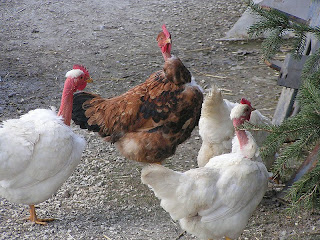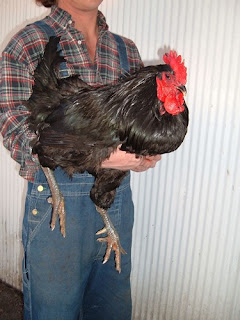The chicken that we're most familiar with in its cooked form is not technically a breed. Like the Labradoodle and the Puggle, the most common meat chicken is a cross between a naturally double-breasted Cornish strain, and a large Plymouth Rock. Like most hybrids, they don't breed 'true' - you can't put two Cornish crosses together and be guaranteed to get a fat old broiler out of them. (In fact, I'd be surprised if they actually figured out how to mate, or didn't crush each other in the process.) They're developed from specially bred lines and sold as chicks with one purpose: to grow some ridiculous, Pamela-Anderson-style freak chicken titties as fast as chickenly possible.

Not surprisingly, this leads to a lot of developmental problems for these chickens, even in the best of care. If they don't outgrow the ability of their legs to hold them up, and aren't allowed to eat themselves into a heart attack at 6 months, the best they can really hope for is a year or two. (Granted, most of their buddies who end up at KFC only get 4-8 WEEKS, so I guess it's all relative.)
Sometimes they're just too lazy to not die.I won't PETA out on you - I eat chicken, myself, and it's not always humanely raised on small farms with rainbows and ponies - but I think it's important to face your food. When the food industry is reliant on chickens we've essentially bred out of the will to live, it might be time to reconsider the Dollar Menu chicken snack wrap.








